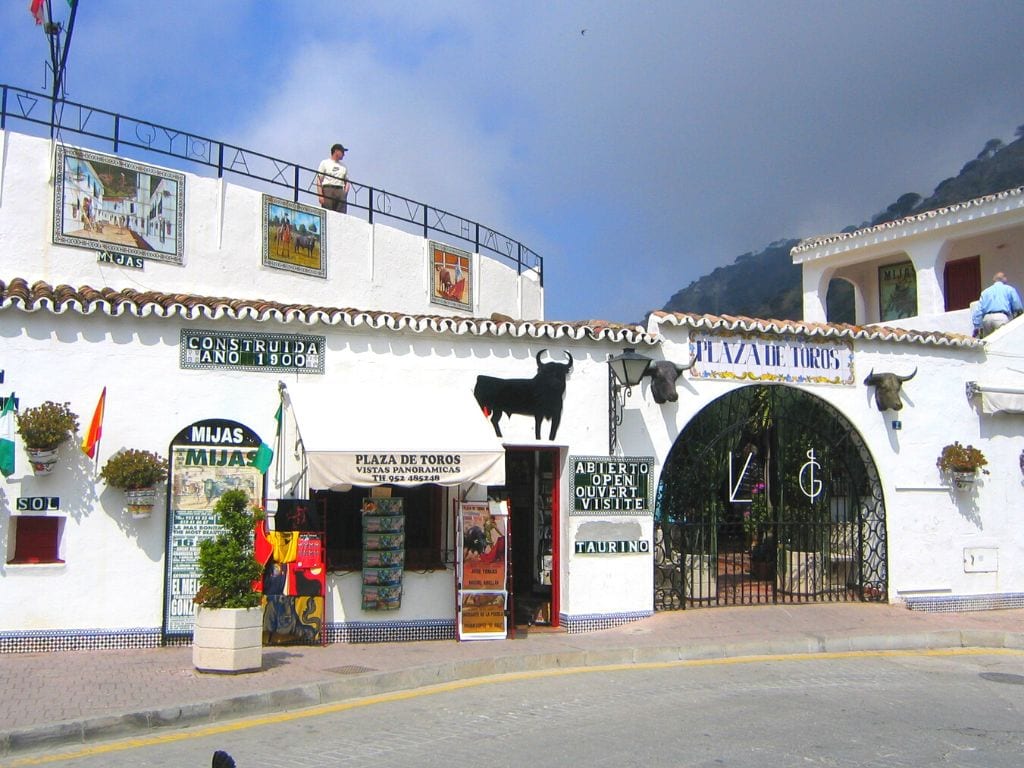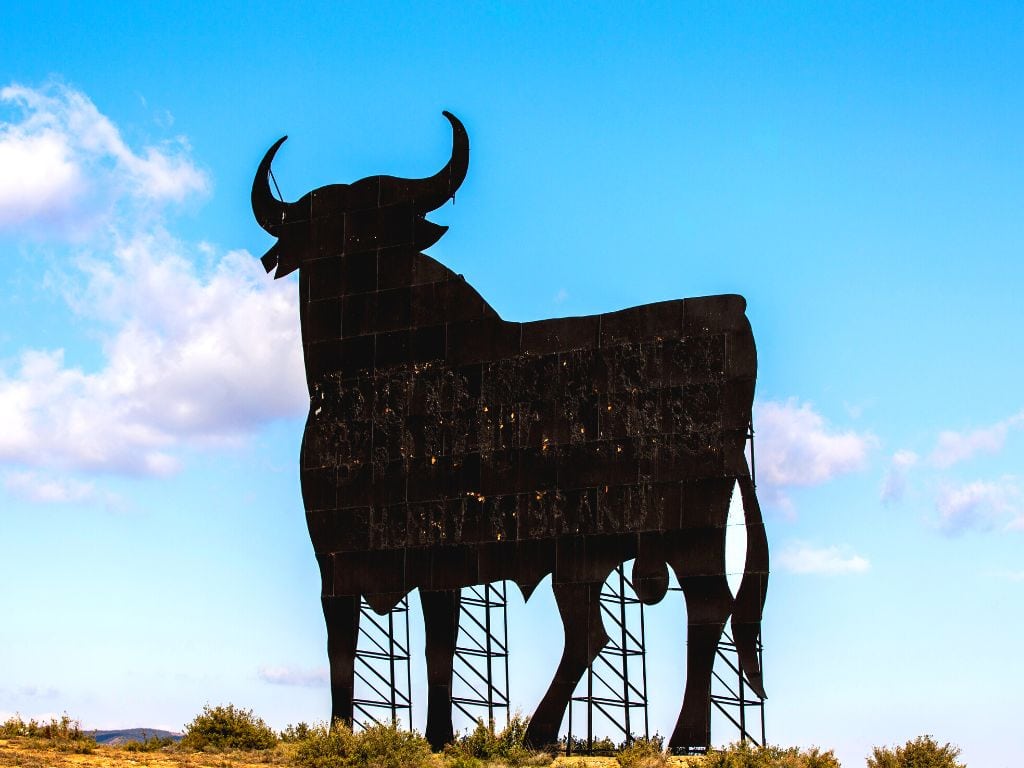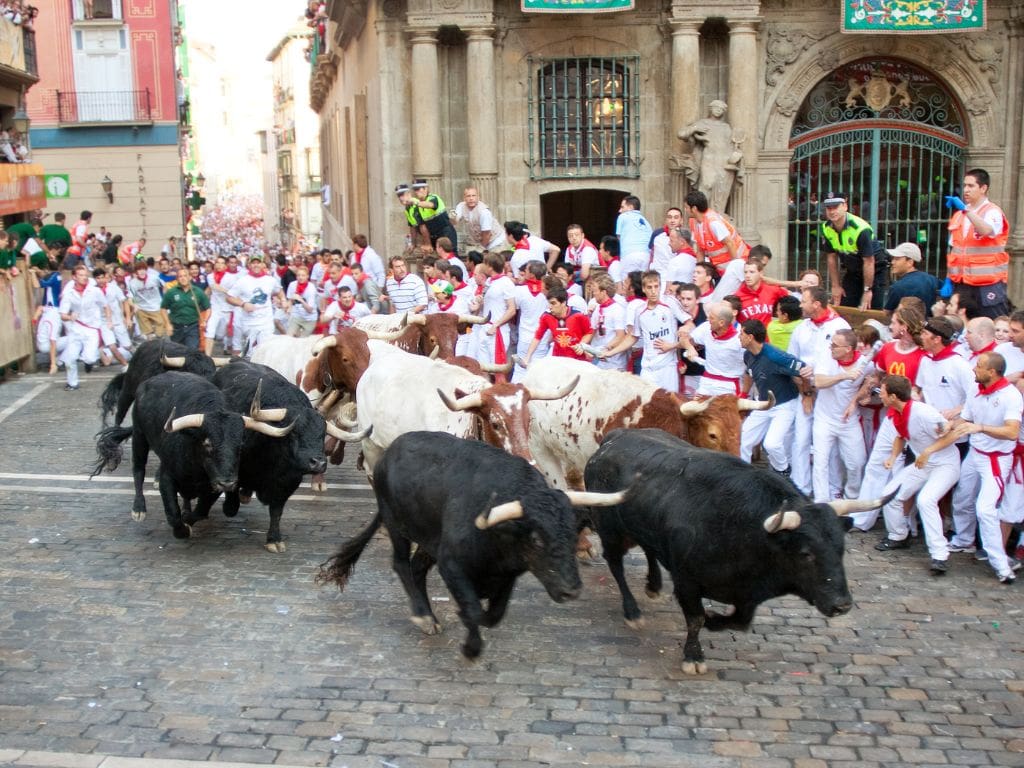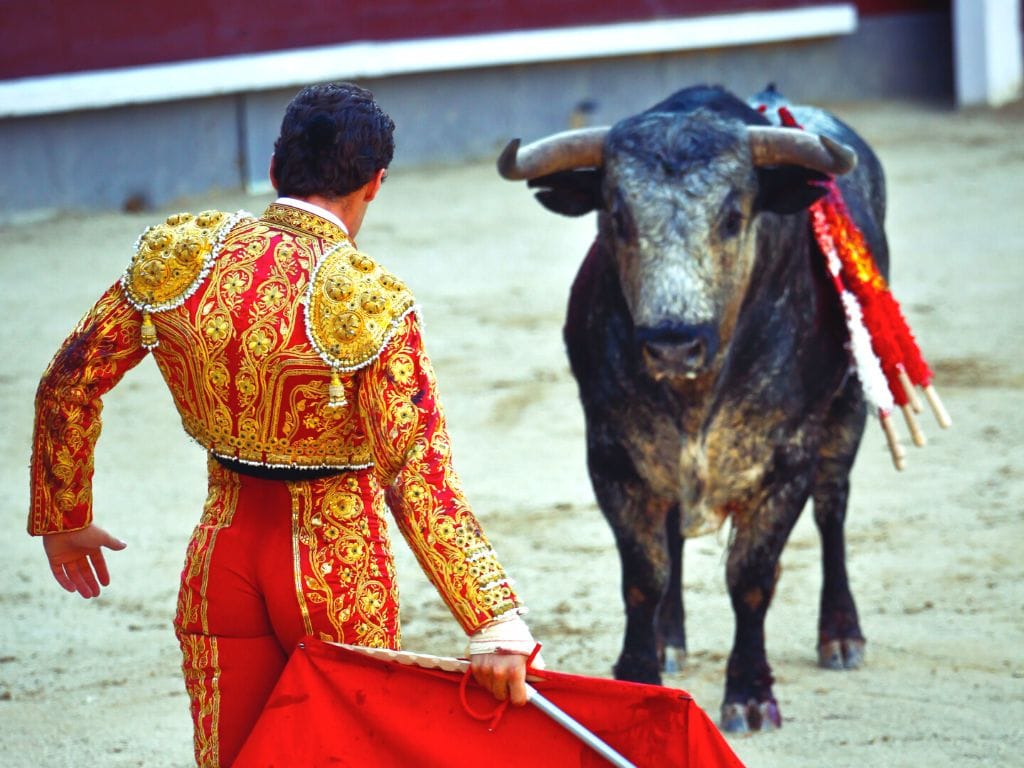What is the National Animal of Spain? All About the Bull
What’s Spain’s national animal? Is it the bull or the lion? Let’s find out!
Once you set foot in Spain, you’ll see the most iconic images of the country everywhere you go—including a variety of animals. To name just a few contenders for Spain’s national animal are Madrid’s famous bear statue, the beautiful dog topiary in front of the Guggenheim Museum, and the lions that adorn the national flag.
And let’s not forget the magnificent and widely-celebrated bull!
Yes. It’s certainly easy to see why figuring out which animal is the Spanish national symbol is no easy feat.
In this post, you’ll learn all about the national animal of Spain and how it became such an iconic national symbol, the meaning behind the animal, and interesting facts that you may have never heard before from someone who used to live in Spain (me)!
What is the National Animal of Spain?

The bull is the national animal of Spain—a truly symbolic figure in Spanish culture.
As an emblem of the nation and the Spanish people, you’ll find the strong, black bull on roadside signs and emblazoned on t-shirts and other tourist memorabilia.
Bullfighting is also a tradition in Spain, and thus the bull is celebrated in many traditional Spanish celebrations and festivals, such as the Festival of San Fermín, held each summer in Pamplona.
Whether he’s a cute, cartoon bull, a masculine silhouette, or a ferocious being, there’s no denying that Spain’s national animal is a representative symbol of Spain’s culture and history—one of strength, courage, and independence.
Why is the National Animal of Spain a Bull?

Why is the bull the national animal of Spain, anyway? While it doesn’t seem that the Spanish government has officially designated the bull as its national animal, the bull has long played a role in Spanish culture and history.
In fact, celebrations involving the bull have roots dating to the 8th century! Bullfights might even have been inspired by the Roman Empire’s gladiator events. There were even times when bullfighting was seen as heretical, but the Spaniards stuck to their traditions.
Thus, the bull has been an incredibly powerful symbol in Spanish culture for thousands of years. It evokes a sense of pride, freedom, and national identity.
Owing to all this, it’s no surprise that Spain chose this historic and cultural icon to be its national animal—with some help from the Osbourne group’s genius advertising campaign, detailed in the next section!
What is the Osbourne Bull?

The Osborne Bull (toro de Osborne) is the large, masculine bull silhouette that you’ll find all over Spain—on postcards, clothes, decor, souvenirs, and, of course on billboards in Spain.
However, the creators of this image didn’t set out to represent their nation’s majestic beast. No, the bull was actually part of a marketing campaign!
In mid-1950 the Osbourne Group commissioned artist Manolo Prieto to create a bull billboard to promote their brandy from Jerez.
Shortly thereafter, billboards of the bull were installed all around Spain. There were once around 500 bull billboards, with the largest measuring 45 feet (14 m) in height so that you couldn’t miss it while driving past!
In 1988, a law was passed requiring the Osborne company to remove all its roadside bulls.
Because of this, Spanish citizens were outraged, saying this particular bull was no longer an advertisement (even the lettering had been removed by this time due to advertising restrictions). The famous Osbourne bull was becoming an unofficial symbol of Spain.
Thus, the Spanish Supreme Court allowed the Osbourne bulls to remain in place, designating them as an important cultural figure—cementing the bull’s place as the official unofficial emblem of Spain.
The design was also declared public domain, meaning anyone can use the shape of the bull in their designs.
Today, you can find just under 100 bulls protecting the country’s roadways as unofficial national symbols in Spain. (I was able to see some on my first road trip through Andalusia. They are very cool and worth a photo stop!)
How is the Bull Used in Spanish Culture Today?

Aside from the images of the bull, the Spanish include the animal itself in some of their most well-known events and customs. In this section, we’ll review two of them.
Running of the Bulls
Each July in Spain, the city of Pamplona holds its famous Festival of San Fermín, honoring the patron saint of the city.
The event dates back to the 16th century, when people would herd bulls from their corrals into the bullfighting ring. Over time, the event evolved into people running the course along with the bulls, and it has been a Spanish tradition ever since.
Today, people from all over the world gather at the Plaza de Castillo for the highly-anticipated Running of the Bulls. The bulls are released, and the crowd quite literally starts trying to outrun them as they race down a narrow street.
As you can imagine, the Running of the Bulls is a dangerous event. Each year, there are injuries and, sadly, there have even been some deaths.
Bullfighting
Bullfighting in a bullring—man against bull—is an original Spanish tradition, sport, and art form practiced to this day in many towns and cities in Spain.
At the event, a group of bullfighters (toreros) welcome a bull to a fight, first by testing the bull’s ability and strength of bulls before allowing them to fight in a rehearsed dance between the matador (the main bullfighter) and the bull. As you may have guessed, the event culminates in the matador killing the bull to much applause.
Although Spain is known for bullfighting, there is controversy around whether or not it should continue. Many Spaniards are against it, citing it as cruel. Still, others believe it’s an important part of Spanish culture and customs. Around 2,000 bullfights are held annually.
Some cities, including Barcelona, have outright banned the event.
What Kind of Bull is the National Animal of Spain?

There are two types of bulls in Spain.
The beloved, emblematic Spanish bull is known as the Spanish fighting bull (toro de lidia español).
This type of brave bull or fighting cattle (also called toro bravo or ganado bravo) is bred specifically to face a bullfighter in a bullring. They are beautiful black or brown creatures with good horns, strong noses, and prominent neck.
Raised on extensive estates in Spain as well as other countries like Portugal, France, and Latin America, the bulls are strong-willed and enjoy living in freedom, away from humans. Of course, this means they are mean, wild, and quick to learn—perfect opponents for the brave bullfighters.
The tame bull (toro manso), on the other hand, is bred for human consumption.
Why Are Bulls Considered Dangerous?

As gorgeous as they are, bulls can be very dangerous. According to El Pais newspaper, 134 people, including 33 matadors, have been killed by bulls in Spain in the last century.
Bulls are adult male cows that weigh up to 1,800 pounds (816 kg). They are not castrated and are bred away from humans, making them distrustful. And don’t forget, they have sharp horns that have been known to gore their opponents.
If bulls are scared or provoked, they can seriously injure or even kill someone. During bullfights, the bullfighters (toreros) actually agitate the bulls to make them angry.
Therefore, it’s considered dangerous for bullfighters to be in the ring with the angry bull or runners to run alongside the bull.
Is the Lion the National Animal of Spain?

Although you see a lion on Spain’s coat of arms, the lion is not the national animal of Spain. The bull is the national animal and can be found all around Spain in various forms.
However, the lion is an important symbol in Spanish culture—and some Spaniards do believe it should be the official animal of Spain even though the most representative animal is the bull.
You’ll find lions on the Spanish national flag as well as the flags of several autonomous communities, including Andalusia and Castile and León.
The Hispanic Lion has ties to the Spanish Crown and the Kingdom of León and is considered one of the oldest heraldic symbols in the world.
The lion doesn’t necessarily represent the actual animal; instead, it’s a representation of a word alluding to the establishment of an old Roman legion that pre-dates the Kingdom of León.
While the lion is not Spain’s national animal, it holds a prominent place in Spanish culture and history.
Why is there a lion on the flag of Spain?
Spain has a lion on its flag because the lion is an important heraldic figure in Spain. A symbol of a good heart and courage, the lion was the symbol of the Kingdom of León. It shows a lion wearing a crown. The lion was first documented when minted by King Alfonso VII on coins in 1126.
What do you call a lion in Spanish?
The word for lion in Spanish is león. It’s pronounced lay-ohn.
Did lions exist in Spain?
There is some evidence of lions existing in Spain (as seen in ancient carvings, for example, in Albacete). However, the dating isn’t very accurate. However, we do know that the Romans brought over lions from Africa to use in circus games and as a method of execution.
What is Spain’s National Bird?
Spain doesn’t have an official “national bird.” However, the imperial eagle which is native to the Iberian Peninsula is most often considered Spain’s national bird. The bird is also called the Spanish imperial eagle or Adalbert’s eagle. These large eagles represent strength and perseverance and have been declared endangered.
What is Spain’s National Flower?
The national flower of Spain is the carnation. These flowers are both romantic and emblematic of the passion of Christ.
National Animal of Spain: FAQs
What is the most famous symbol of Spain?
The Spanish national flag is the most famous symbol in Spain. It’s a red and gold flag featuring the Spanish coat of arms. On the coat of arms, you’ll find symbols from the ancient kingdoms of Spain: the castle of Castile, the lion of León, the red and gold stripes of Aragon, the chains of Navarre, and the pomegranate of Granada.
What animal is considered good luck in Spain?
Frogs have traditionally been animals that bring good luck in many different countries. In Madrid, a gigantic frog statue, the Rana de la Fortuna (fortune frog) was installed next to the door of the Gran Madrid casino—an appropriate place for those in need of luck.
What eagle is the symbol of Spain?
The Spanish imperial eagle is known as an unofficial symbol of Spain. You can find the heraldic symbol, the Eagle of Saint John (Águila de San Juan), as well, which was associated with Catholic Monarchs but was later used during Francoist Spain (1939–77).
What is the national animal of Barcelona?
The national animal of Catalonia, where Barcelona is located, is the Catalan donkey (burro català in Spanish). The large Catalan donkey is native to the area and embodies the traits that Catalans value: peaceful but strong-willed.
Is there a movie about the Spanish bull?
Ferdinand (2017) is a movie about a bull that lives in Spain and is being raised to become a fighter. But, all Ferdinand wants to do is enjoy his life on the farm. As a former Spanish Teacher, I used to show this film in my class. I highly recommend you get this fantastic movie about Spain’s beloved animal!
Last Words on Spain’s National Animal

Although the bull may not be officially designated as “the national animal of Spain, it has remained a proud symbol of the Spanish people for thousands of years. And, with the help of the Osbourne bull, it became a prominent cultural figure in the latter half of the 20th Century.
Today, the bull is widely acknowledged as the Spain national animal. Look for one of the many representations of the bull next time you’re in Spain!
